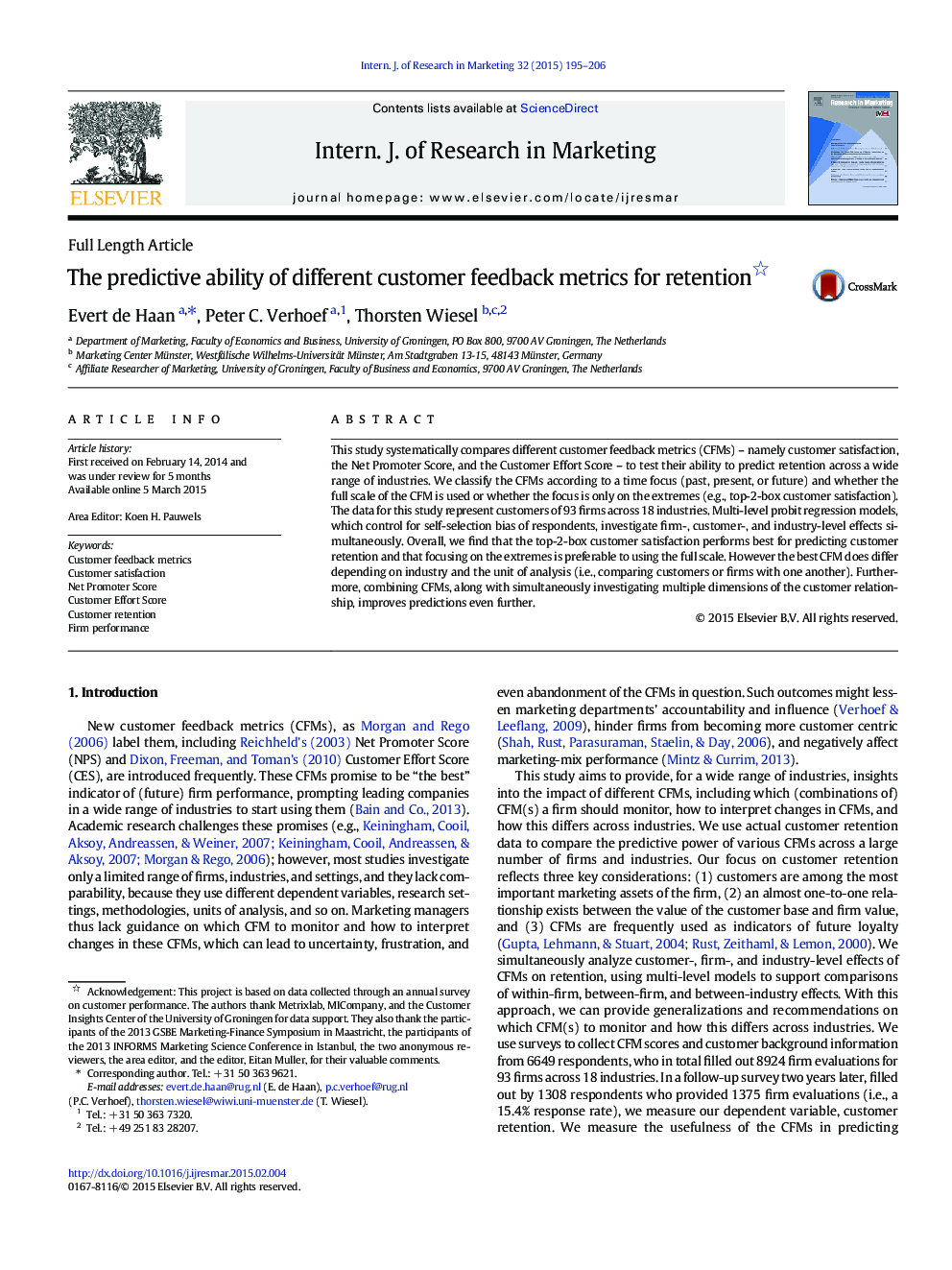| Article ID | Journal | Published Year | Pages | File Type |
|---|---|---|---|---|
| 880103 | International Journal of Research in Marketing | 2015 | 12 Pages |
•All CFMs, except the CES, have a significant impact on retention at both the customer and firm levels.•Changes in top-2-box customer satisfaction, followed by the official NPS, have the highest impact on customer retention.•The predictive power of CFMs differs across industries, i.e. there is no single best metric across industries.•The usefulness of CFMs differs depending on the level of analysis, i.e. comparing customers or firms.•Combining CFMs tends to improve predictions. Therefore, firms might be better off using a dashboard of CFMs.
This study systematically compares different customer feedback metrics (CFMs) – namely customer satisfaction, the Net Promoter Score, and the Customer Effort Score – to test their ability to predict retention across a wide range of industries. We classify the CFMs according to a time focus (past, present, or future) and whether the full scale of the CFM is used or whether the focus is only on the extremes (e.g., top-2-box customer satisfaction). The data for this study represent customers of 93 firms across 18 industries. Multi-level probit regression models, which control for self-selection bias of respondents, investigate firm-, customer-, and industry-level effects simultaneously. Overall, we find that the top-2-box customer satisfaction performs best for predicting customer retention and that focusing on the extremes is preferable to using the full scale. However the best CFM does differ depending on industry and the unit of analysis (i.e., comparing customers or firms with one another). Furthermore, combining CFMs, along with simultaneously investigating multiple dimensions of the customer relationship, improves predictions even further.
